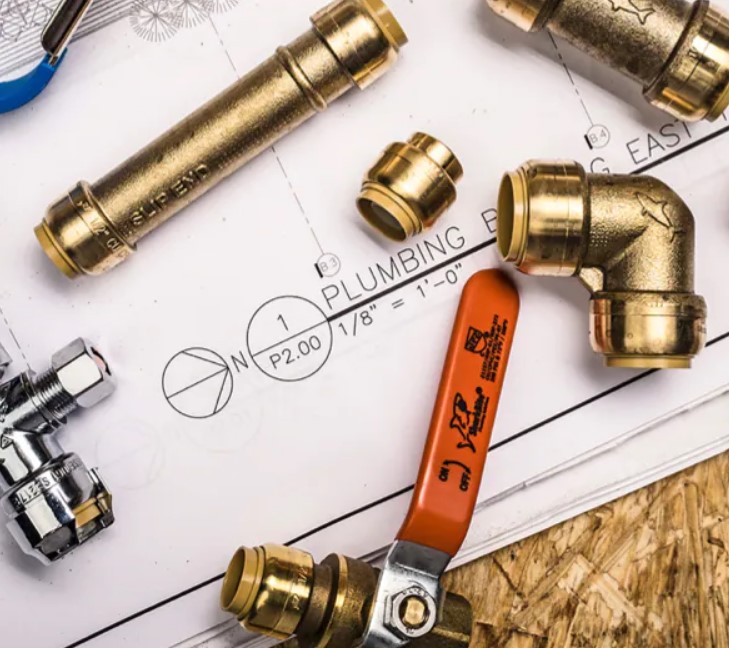What Is Leak Detection and How Do You Identify Leaks?

Leaks in your home can cause a lot of damage. They can lead to mold and mildew growth, which can cause serious health problems. Leaks can also cause your energy bills to skyrocket. That’s why it’s important to detect leaks early and take care of them right away. There are a few different ways to detect leaks. One way is to listen for them. If you hear water running when no one is using any water fixtures, that’s a good sign you have a leak. Another way to detect leaks is to look for them. Check for damp spots on floors, ceilings, or walls. These could be signs of a hidden leak. If you suspect you have a leak, the best thing to do is call a professional plumber right away. They have the tools and expertise to locate and fix leaks quickly and efficiently.
The Importance of Leak Detection
It is very important to have a good leak detection system in place to avoid any costly repairs or replacements. There are various types of leak detection systems available in the market, which can be used according to the requirements. The most common type of leak detection system is the acoustic leak detection system, which uses sensors to detect any leaks in the pipes. There are also other types of leak detection systems like infrared leak detection system and thermal imaging leak detection system.
How to Detect Leaks
Leaks can be frustrating and costly, but detecting them early can save you a lot of money in repairs. There are a few telltale signs that you have a leak. If you notice a sudden spike in your water bill, that is usually a sign that you have a leak. If you have a water meter, check it to see if the leak is constant or intermittent. Small leaks may not show up on your water bill, but they can still waste a lot of water. To check for small leaks, read your water meter before and after a two-hour period when no one is using water. If the meter changes, you most likely have a leak. Another way to check for leaks is to simply listen for them. Turn off all the water in your house, and then go outside to see if you can hear water running. If you can, that means you have a leak. If you suspect you have a leak, the first step is to locate it. Check all the places where water comes into your house, including pipes under the sink, behind the toilet, and in the basement or crawlspace. Once you find the leak, turn off the water at the nearest shutoff valve. This will stop the flow of water and prevent further damage. Now that you’ve located and turned off the water, it’s time to call a plumber to come and make the repairs.
The Different Methods of Leak Detection
There are many different ways to detect leaks in your home. Some of the most common methods include: 1. Water bills: A sudden increase in your water bill can be an indication that you have a leak.
2. Visual inspection: Checking for wet spots on your ceilings, floors, or walls can be a sign of a leak.
3. Sound: You may be able to hear a leak if it is located near pipes or plumbing fixtures.
4. Temperature: A drop in water pressure or water temperature can also indicate a leak.
5. Mold: Leaks can often cause mold to grow, so if you see mold in your home, it may be time to check for leaks. If you suspect you have a leak, it is important to act quickly. Leaks can cause serious damage to your home and can waste a lot of water. If you are not sure how to fix the problem, you can always call a professional plumber.
The Benefits of Leak Detection
Leaks can happen anywhere in your home, and they can be small or large. Even a small leak can waste hundreds of gallons of water and cost you money on your water bill. A large leak can cause major damage to your home. That’s why it’s important to have a leak detection system in place. A leak detection system can alert you to a leak, even if you’re not at home. That way, you can shut off the water and avoid major damage. There are many different types of leak detection systems. Some use sensors to detect moisture or water pressure changes. Others use acoustic sensors to listen for the sound of water leaking. Some systems even combine both methods. No matter what type of system you choose, it’s important to have one in place. A leak detection system can save you money, time, and hassle in the event of a leak.
The Drawbacks of Leak Detection
There are several potential drawbacks to using leak detection as a means of monitoring for leaks in pipelines. One such drawback is the possibility of false positives, where the leak detection system indicates a leak when there is none. This can lead to costly and unnecessary repairs. Another drawback is that some leak detection systems can be fooled by certain types of leaks, such as those that are very small or happen slowly over time. Additionally, leak detection systems can be expensive to install and maintain, and may require specialized training to use effectively.
The Different Types of Leaks
There are different types of leaks, and they can happen for a variety of reasons. Some of the most common leaks include water leaks, gas leaks, and oil leaks. Water leaks can happen due to faulty plumbing, cracked pipes, or leaks in the roof. Gas leaks can be caused by faulty appliances, bad wiring, or cracked pipes. Oil leaks can happen due to faulty seals or gaskets, or due to wear and tear. Leaks can be a nuisance, and they can also be dangerous. If you have a leak, it’s important to get it fixed as soon as possible.



